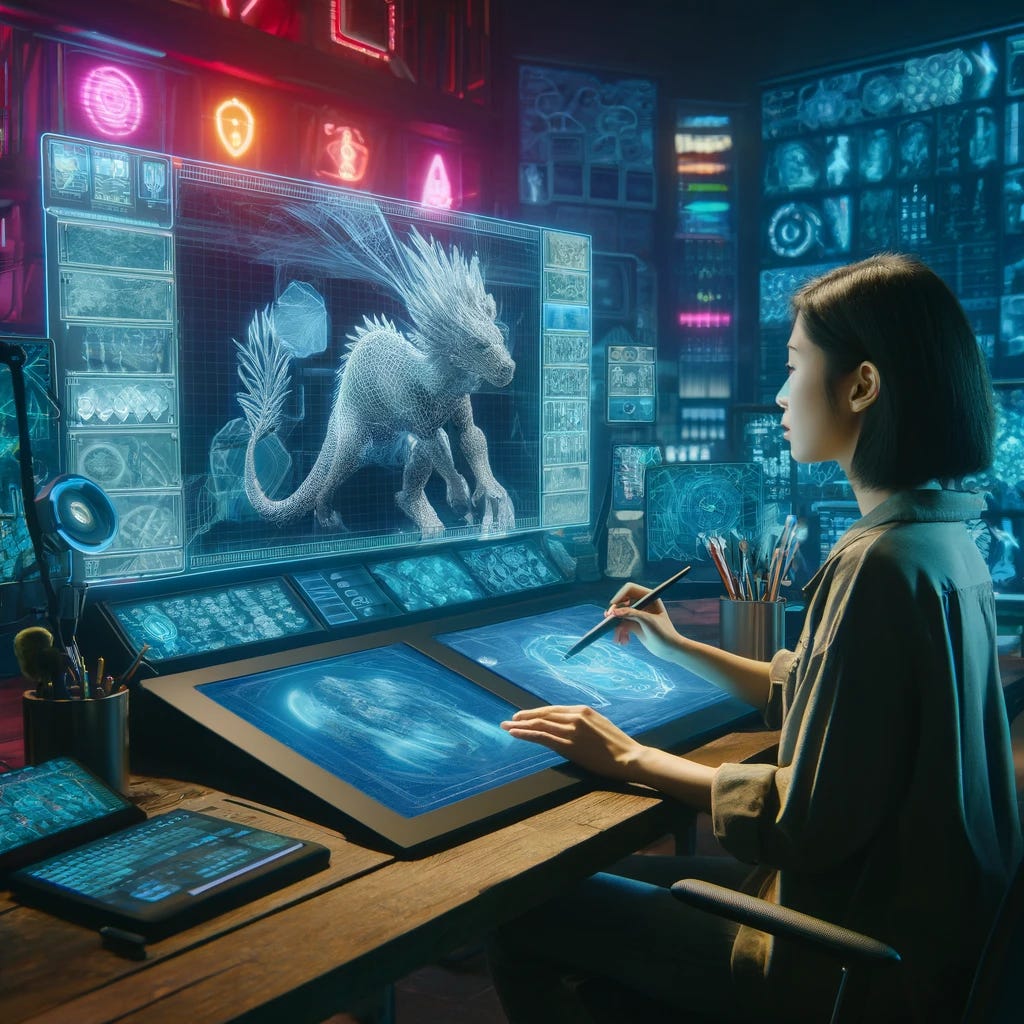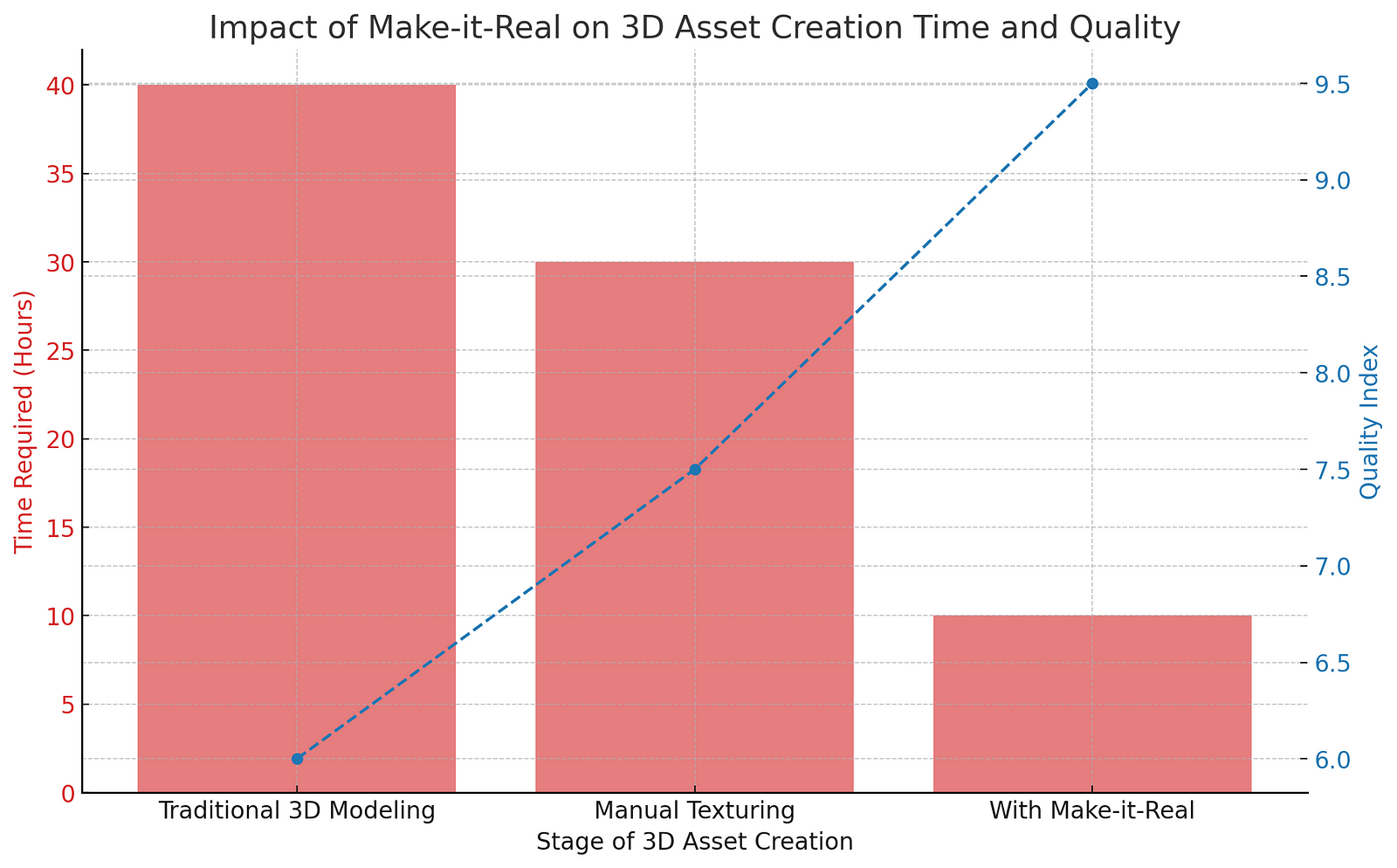
Imagine a world where every detail of a 3D object, from the texture of its surface to the way it reflects light, can be perfected with just a few clicks. This is not a scene from a sci-fi movie but a reality made possible by the groundbreaking technology known as “Make-it-Real.” Developed by a team of researchers from prestigious universities and AI labs, this technology harnesses the power of Multimodal Large Language Models (MLLMs) to transform plain 3D models into stunningly realistic assets. It’s a tool that turns the tedious task of manual material assignment into a seamless, automated process, paving the way for revolutionizing industries like gaming, virtual reality, and online retail.
The Problem with Current 3D Assets
Traditional 3D modeling often results in assets that, while visually impressive, lack the nuanced textures and material properties needed for realism under various lighting conditions. The process of manually adding these textures is not only labor-intensive but also requires a high level of expertise and sophisticated software. This barrier limits the potential for creators, particularly those without significant resources, to produce high-quality 3D content. Enter “Make-it-Real”: a solution designed to automate this process, significantly reducing the time and skill needed to enhance 3D models.
How Make-it-Real Works
“Make-it-Real” works by first analyzing and recognizing materials within a 3D object using a large language model, specifically GPT-4V. This model can describe and identify materials based on visual and textual cues, which allows it to match these descriptions against a vast library of materials. Once the appropriate materials are identified, they are applied to the 3D model, ensuring that the textures align perfectly with the object’s geometry and the intended artistic vision. This not only enhances the object’s aesthetic but also its response to different lighting environments, making it more versatile across various applications.
Impact on the Creative Industry
The introduction of “Make-it-Real” is set to revolutionize the way designers and developers work with 3D models. By automating the material refinement process, it allows artists to focus more on the creative aspects of 3D design rather than the technical nuances of material properties. Additionally, it democratizes high-quality 3D content creation, enabling independent creators and small studios to compete with larger entities. This shift could lead to more innovation and diversity in the visual content available in digital and virtual spaces.
To further illustrate the advancements brought by “Make-it-Real” in 3D modeling, the following graph showcases a comparison between traditional 3D asset creation methods and those utilizing the “Make-it-Real” technology.

Looking Towards the Future
As “Make-it-Real” continues to evolve, its potential applications could expand beyond simple 3D asset creation. Future developments might integrate real-time material adjustment based on environmental changes or user interactions, further blurring the line between digital and physical realities. This could have profound implications for augmented reality applications and real-world simulations, offering more immersive and realistic experiences.
Real-Time Adaptation
“Make-it-Real” can adjust the properties of materials in real-time as lighting conditions change in the environment, ensuring that 3D objects always look their best.
Extensive Material Library
The technology includes a library of over 4,000 materials, each with detailed descriptions, making it one of the most comprehensive collections available today.
Enhanced Realism
By applying physically accurate textures, “Make-it-Real” enhances the realism of 3D objects to a degree that they are virtually indistinguishable from their real-world counterparts in digital settings.
Time Efficiency
The technology reduces the time required to texture a 3D model by up to 80%, significantly speeding up the production pipeline for digital content creators.
Accessibility for Non-experts
“Make-it-Real” simplifies the material application process so much that even individuals with minimal graphic design experience can produce professional-quality 3D models.
Conclusion
The “Make-it-Real” technology is not just a tool; it’s a catalyst for change in the world of 3D modeling and digital content creation. It promises to open up new possibilities for artists and designers, making it easier than ever to bring imaginative ideas to life with stunning realism. As this technology continues to evolve and become integrated into various platforms, it could very well redefine our expectations of digital experiences, making them more immersive and realistic. For anyone passionate about the future of digital design, “Make-it-Real” offers a glimpse into a world where creativity knows no bounds.
About Disruptive Concepts
https://www.disruptive-concepts.com/
Welcome to @Disruptive Concepts — your crystal ball into the future of technology. 🚀 Subscribe for new insight videos every Saturday!
Comments
Post a Comment